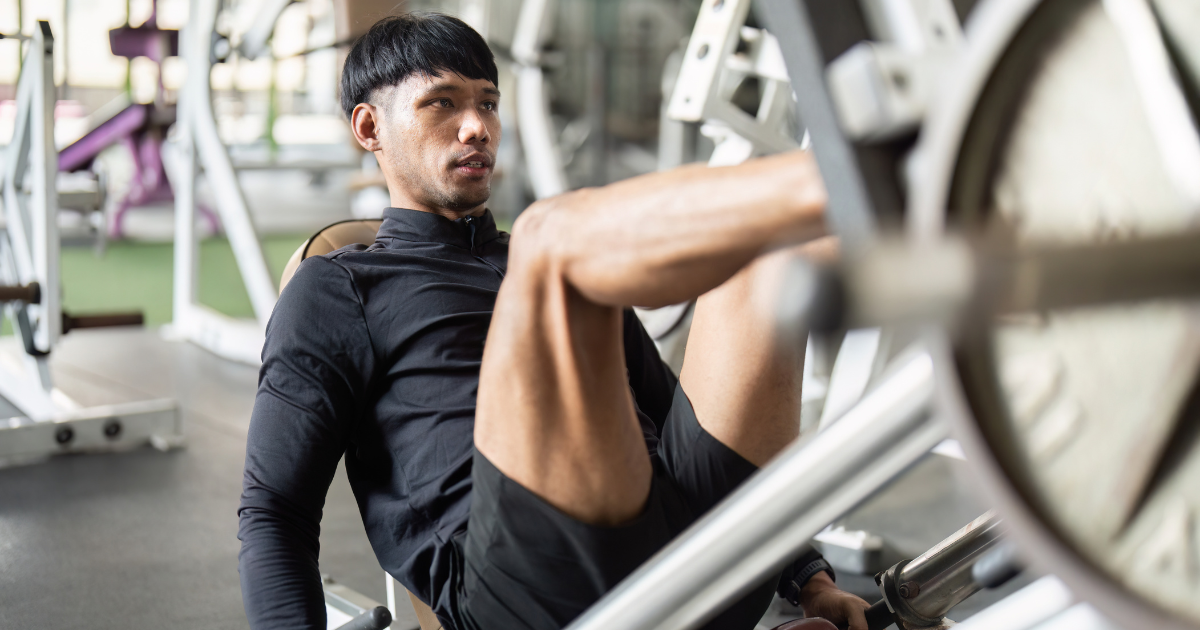Building Stronger Legs for the Pickleball Court
Head of Education Neil Friedenberg demonstrates proper leg positioning on the court.
When it comes to your pickleball performance, quickness, stability, and endurance all start from the ground up—what some players call “The Grind.” From explosive drives to subtle shifts, your legs power every move. Strong, balanced muscles improve agility, shot consistency, and help prevent injuries and fatigue. It’s time to train your lower body specifically for the demands of pickleball.
Leg Strength Matters
Pickleball requires constant lateral movement, quick directional changes, and short bursts of speed. Weak legs lead to slower reactions, poor balance, and a higher risk of knee, ankle, or hip strain.
So how do strong legs improve your game?
Stamina: You’ll last longer in rallies and recover faster between points.
Stability: A solid lower body helps you maintain balance.
Injury Prevention: Strong muscles support joints and reduce strain from repetitive motion.
Power: Leg strength translates into more powerful serves, volleys, and drives. Every shot in pickleball involves the lower body.
Targeted Leg Exercises for Pickleball Players
Each exercise below targets specific muscles that improve movement, balance, and endurance on the court.
1. Squats on a Balance Ball for Stability & Core Control
Muscles worked: quads, glutes, hamstrings, calves, and core
I love these! They build balance while hitting nearly every muscle below the waist. Standing on a balance ball while squatting challenges stabilizer muscles—essential for those quick stops and direction changes.
How to do it:
Stand on the balance ball with feet shoulder-width apart.
Engage your core and lower into a squat position with hands in front.
Keep knees aligned with toes, then rise with control.
Perform 3 sets of 10–12 reps. Make it interesting: hold a 5-lb dumbbell and emulate swinging a paddle.
Pickleball benefit: Improved balance and joint stability during side-to-side or forward movements.
2. Calf Raises for Explosive Push-Off Power
Muscles worked: calves and ankles
Your calves drive every sprint to the net or lateral move—they start the motion.
How to do it:
Stand with your feet hip-width apart, holding a dumbbell in each hand.
Raise your heels until you’re on your toes, pause, then lower slowly.
Perform 3 sets of 15–20 reps, increasing weight by 10 pounds as you progress.
Pickleball benefit: Faster first steps and more powerful push-offs. These can also be done on a leg-press machine for more support. I prefer this because it feels more supported than a bar or dumbbells. Over time, I have noticed that my jumping ability has greatly improved.
A pickleball player builds lower-body strength with the leg press machine—a key move for power and stability on the court.
3. Leg Press for Overall Strength & Power
Muscles worked: quads, hamstrings, and glutes
The leg press (one of my favorites) builds total leg power, reinforcing the muscles of your quads and biceps femoris (yes, your legs have biceps!)—that fuel groundstrokes and quick drives.
How to do it:
Adjust the machine so knees are at a 90-degree angle.
Push through your heels to extend, then return slowly.
Perform 3 sets of 10–12 reps, increasing weight each set.
Pickleball benefit: More explosive movement and stronger base support during rallies.
4. Quad and Hamstring Work for Balance & Injury Prevention
Strong quads and hamstrings stabilize your knees—one of the most vulnerable joints for pickleball players. (No wonder so many wear knee sleeves and compression bands.)
How to do it:
Leg extensions: 3 sets of 10-12 reps to target quads.
Leg curls: 3 sets of 10-12 reps to hit hamstrings.
Pickleball benefit: Reduces knee injury risk and maintains balance during lunges or pivots.
5. Dumbbell Lunges for Added Strength & Court Movement
Muscles worked: quads, hamstrings, glutes, calves, and core
Lunges mirror the forward and side movements used in rallies.
How to do it:
Hold a dumbbell in each hand (start light for proper form).
Step forward into a lunge, lowering your back knee.
Push through your front heel to stand.
Alternate legs for 3 sets of 10–12 reps each.
Pickleball benefit: Builds strength for quick lunges to the kitchen line.
6. Box Jumps for Explosive Power & Agility
Muscles worked: glutes, quads, hamstrings, and calves
Box jumps train your fast-twitch muscle fibers for quicker reactions. Only include them if you’re comfortable and confident in your form.
How to do it:
Stand in front of a sturdy box.
Bend your knees, swing your arms, and jump onto the box.
Step down carefully and repeat 8–10 times for 3 sets.
Pickleball benefit: Boosts explosive movement for sprints and net approaches, and helps you cover angles that open up during play.
7. Agility and Footwork Drills
Strong legs are only effective if they move efficiently—as a cohesive unit. Add agility drills to improve control and coordination.
Try:
Ladder drills: Quick feet in and out for coordination.
Cone drills: Side shuffles and quick direction changes.
Side skips & hop steps: Smooth lateral movement.
Pickleball benefit: Faster reactions and smoother transitions between shots.
8. Stretching and Flexibility Work
A player stretches his calves to improve flexibility and reduce post-match stiffness.
Don’t skip recovery and flexibility—both are key for long-term performance.
Focus on:
Hamstring stretches: Standing or seated forward folds.
Hip flexor stretches: Low lunge position.
Calf stretches: Against a wall.
Pickleball benefit: Greater range of motion, less stiffness, and fewer muscle pulls.
The Bottom Line: Strong Legs = Stronger Game
Your legs are your foundation on the pickleball court. Training them with strength, balance, agility, and flexibility exercises will improve stamina, reduce injury risk, and enhance performance.
Give it a try—and have fun playing.
About the Author: Neil Friedenberg is a certified pickleball coach and Head of Education for Empower Pickleball. He is passionate about helping players of all levels grow their skills and confidence on the court. A lifelong player with deep roots in the sport, Neil also brings experience as a paddle company owner, blending technical expertise with a love for the game.





